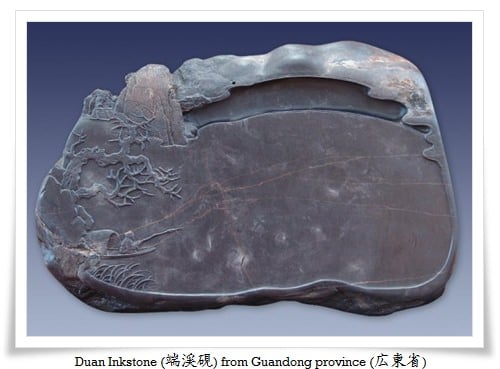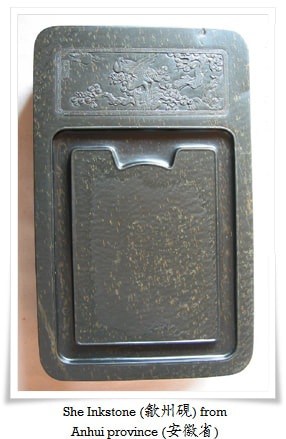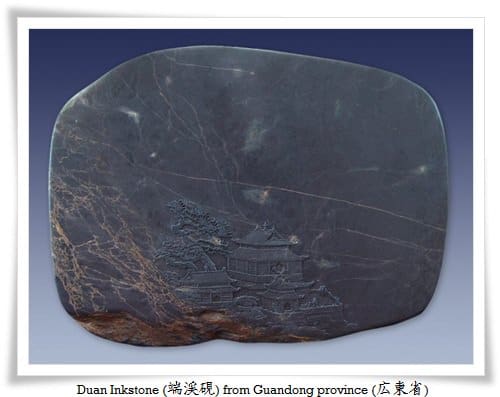There are two ingredients that we will apply on our suzuri (硯, inkstone) in order to prepare the ink. One is water and the other is ink. Water should be fresh, not boiled, although bottled mineral water is also recommended. Fresh water from a tap is the most convenient, obviously. Ink should be of the best quality, preferably containing a low percentage of animal glue, and without visible fractures, cracks, etc. Such ink will chip off, and may damage both the inkstone and the brush.
After use, the inkstone should be washed thoroughly and dried naturally by flipping it upside down on a clean cloth. This way it will not gather dust and its grinding surface will be sheltered from any damage. If we do not wash the remaining ink well, it will dry out, harden and can ruin the inkstone surface permanently. In any case if the surface needs thorough cleaning there are special soft wash stones (砥石, toishi) that can be used for scrubbing the inkstone surface under water, which revitalizes the inkstone.
While rubbing ink it is crucial that we do not apply excessive power. The weight of our arm and gravity alone should do the trick. Pressing too hard we could damage the inkstone surface, or cause rubbed ink particles will be too large, producing low quality ink.
An inkstone has two major areas that are vital during ink preparation: the “inkstone well” (墨池, bokuchi) and “inkstone temple” (墨堂, bokudou). Between them there is a narrow space called “the shore” (硯区, suzuriku). Ink is rubbed on the inkstone temple with a small amount of water by means of circular movements, perpendicular to the inkstone surface. Then, ready made ink is pushed down the inkstone well, which acts as a container.
The best inkstones are made of stone (or silt). As part of the Earth it is one of the five core elements creating our Universe (in Chinese theory these are earth, metal, water, wood, and fire). For that reason even if not used the inkstone needs to be moisturized at times with water, to maintain its natural abilities.



